There are many things that homeowners have to think about when they’re in the process of designing their kitchen. This includes how much weight will be put on the cabinets, what type of countertop you want, and how many appliances will be needed. But one thing we don’t often consider is how heavy our kitchen cabinets can hold before they start showing signs of wear and tear. Kitchen cabinet weight capacity varies depending on a number of factors. In this article, we will discuss how much weight kitchen cabinets can actually handle.
Kitchen Cabinet Weight Standards
Standard kitchen cabinets are designed to hold a specific amount of weight. The following guidelines are based on the assumption that cabinets will be hung in accordance with the manufacturer’s instructions, and used for their intended purpose.
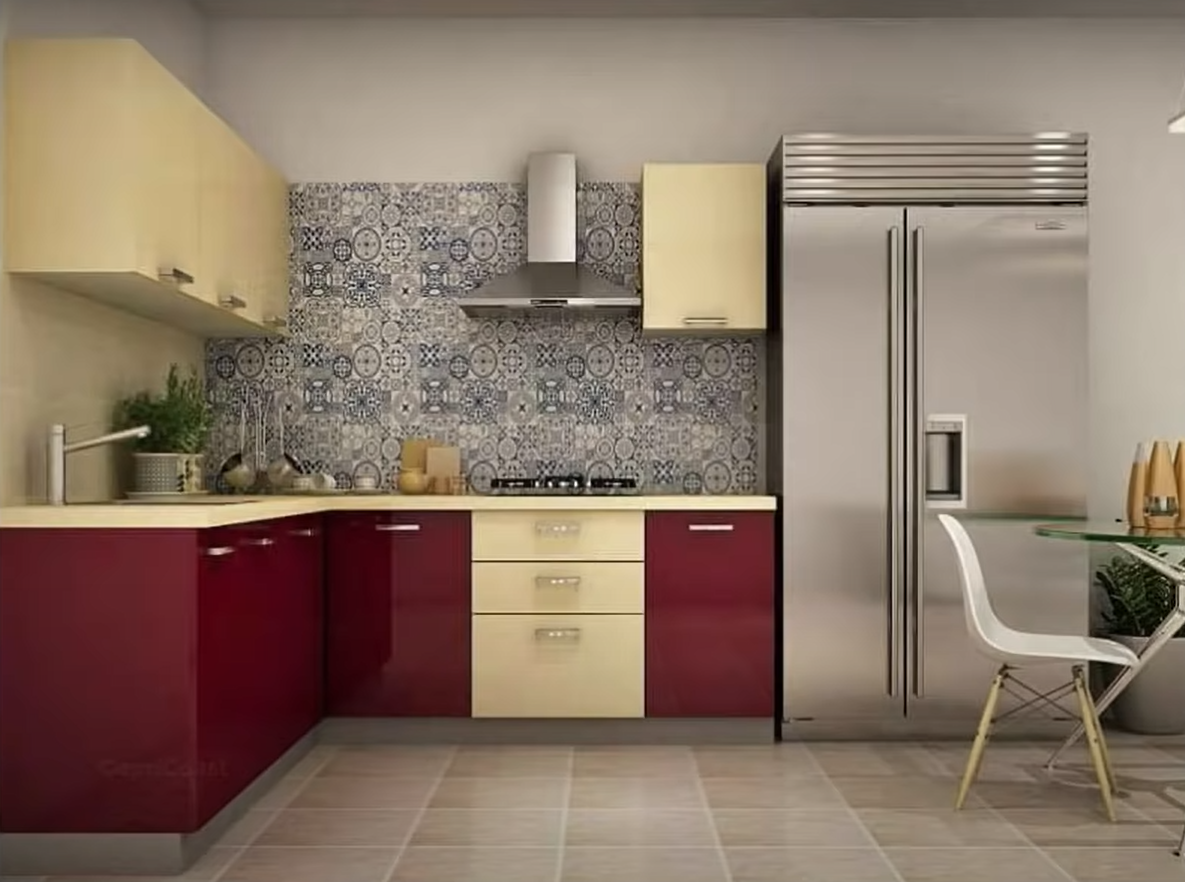
- Kitchen cabinet weights range from 80 pounds up to 150 pounds per linear foot depending upon construction method or materials used, what type of items they’ll be holding, etc.
- A standard 100 lb. the kitchen cabinet base has a load-bearing capacity of 250 lbs.; this is assuming that it’s mounted to the wall studs with metal toggle bolts, and not just hanging free in the air or resting on floor supports/plywood subflooring.
- The average weight for most base cabinets should be around 80 pounds per linear foot; these are designed to hold pots & pans, dishes, food items, etc., but may also have one or two doors which could add another 20–40 lbs. depending upon size. Because they’re very deep (24 inches), they’ll hold more weight than say…a shallow 18-inch wide unit would.
- Upper cabinets will typically weigh less simply because there are fewer shelves which reduce the overall weight, plus they’re usually smaller in width and depth too.
- Wall cabinets are lighter than base units because of their open construction with no back or top to support; however, if you have a solid wood wall cabinet it will be more sturdy & hold its maximum capacity better over time compared with an MDF unit that may warp with changes in humidity levels. The average standard kitchen pantry has a load-bearing capacity between 100–150 lbs., but again…this depends upon how many doors/shelves/etc. there are as well as what items will be stored inside (heavy pots vs dish towels).
Kitchen Cabinet Weight Variables
There are also other factors that can affect how much weight a kitchen cabinet will hold.
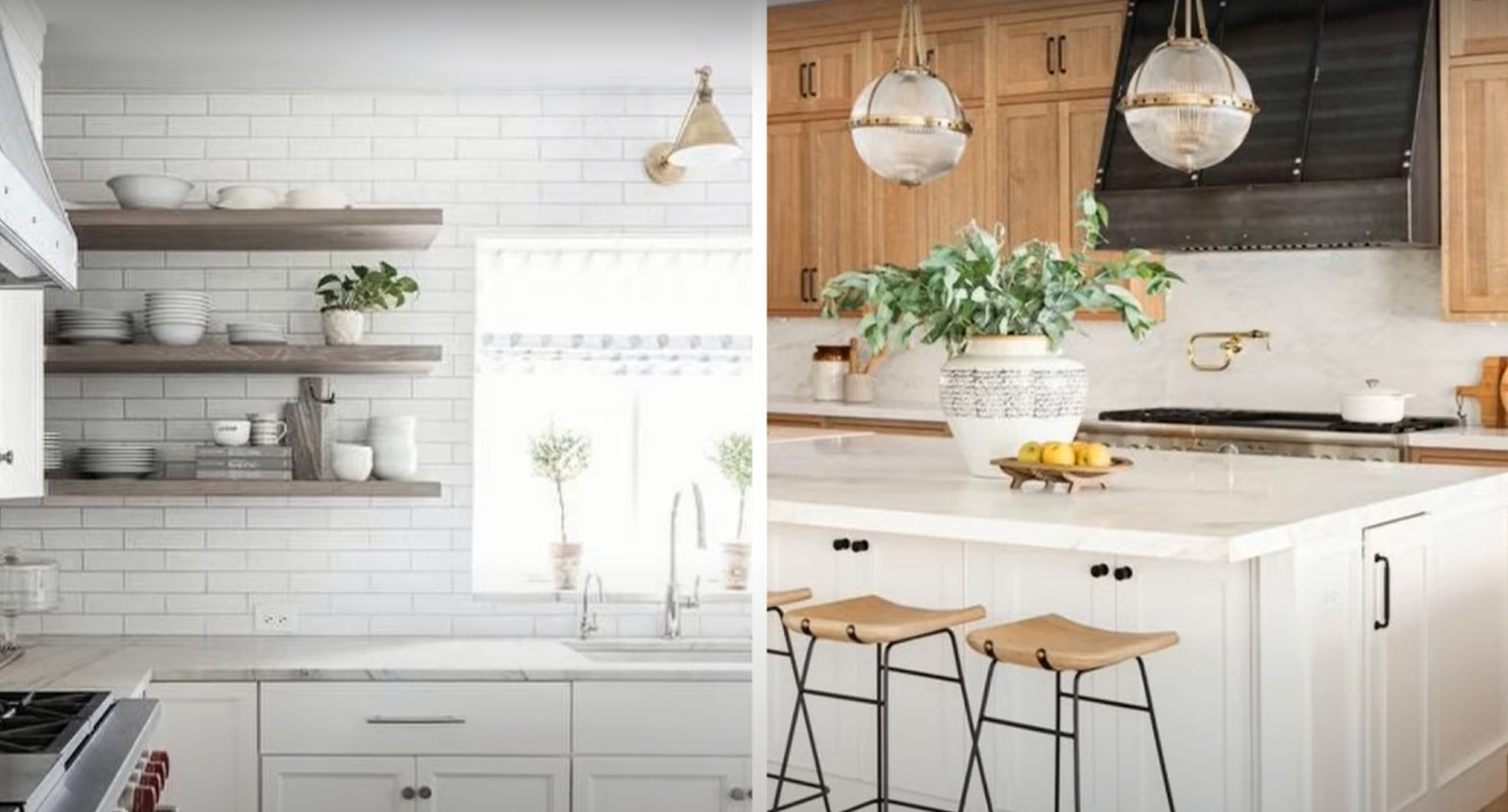
First, the width and depth of a kitchen cabinet contribute to its strength or weakness. A shallow-depth or wide cabinet is going to be weaker than one built with more lumber and materials because it has less structural integrity. This means you have to watch out for these types of cabinets if they are hollow inside so as not to overload them too much.
Finally – don’t forget about those wall studs! The most secure way of attaching heavy load-bearing objects in a room is having them attached to the wall studs so make sure they are up to snuff before you start putting your new kitchen cabinets together.
Kitchen cabinet weight variables can be confusing if you’re not familiar with them, but it’s important that DIYers and do-it-yourself enthusiasts know how much load their cabinets will hold without compromising safety.
Kitchen Cabinet Material Choices
The next consideration that you should make is the material that your cabinets are going to be made from. With a wide variety of materials available, it can often seem overwhelming trying to figure out which cabinet will meet all your needs and desires as well as fit both in with your design plans and within your budget.
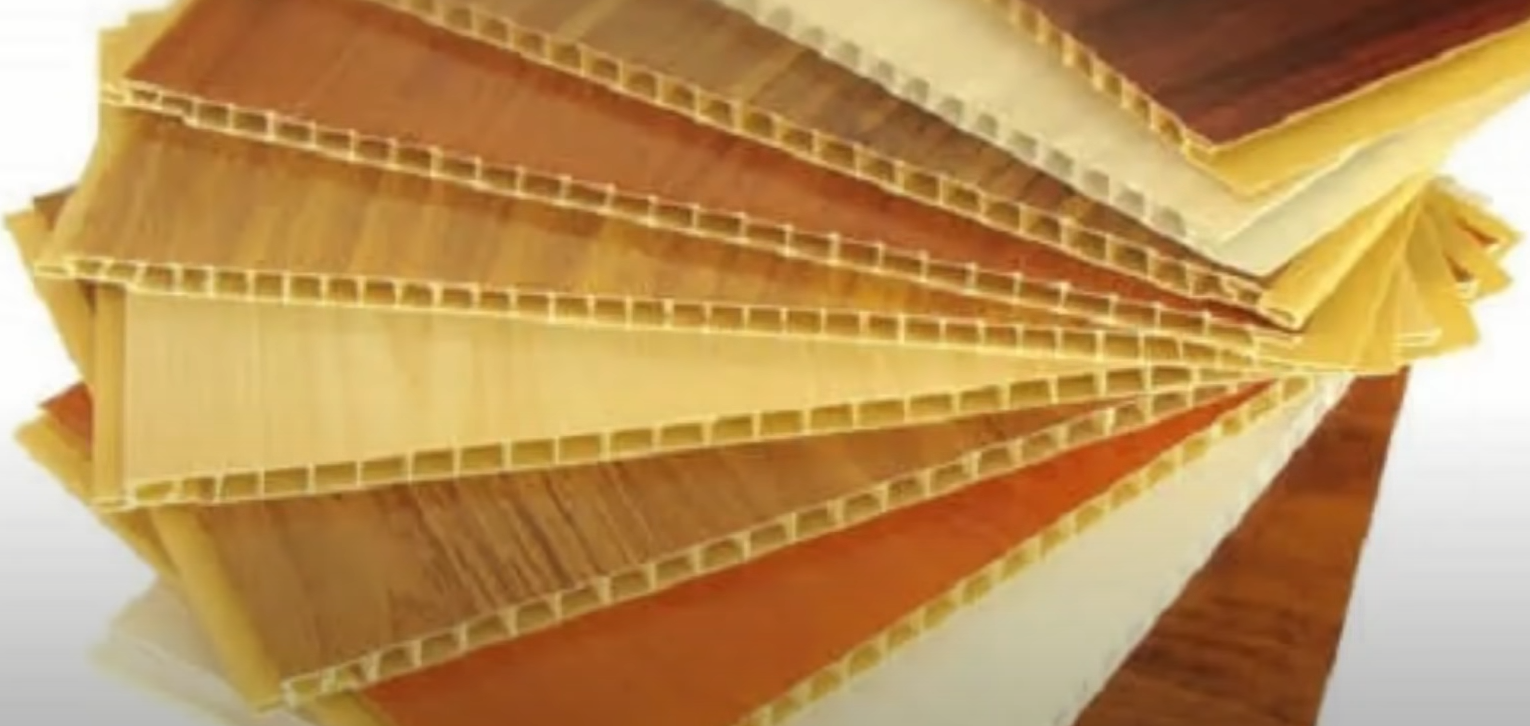
There’s no doubt about it: steel kitchen cabinets look great anywhere they’re installed—from industrial chic to modern farmhouse or even cottage country shabby-chic decorating schemes! And let’s not forget durability – stainless steel doesn’t just hold up well over time; its tough exterior makes these cupboards virtually impervious to knocks and bumps. The only real drawback? They tend to dent more easily than other types of metal cabinetry (namely aluminum or steel).
But what’s the difference between a cabinet made from stainless steel and one that’s been painted with a metallic finish? For starters, you can usually tell by looking closely at the seams. Cabinets finished in high-gloss paint will have sharp edges where two pieces of material meet while those built from actual metal will have more rounded corners.
And let’s not forget custom options—most companies allow for full customization when it comes to their cabinets’ construction materials, so go ahead and get creative! Aluminum kitchen cabinets, on the other hand, offer a much sleeker look than traditional plywood boxes but are still strong enough to hold up under daily use thanks to an ultra-durable alloy build.
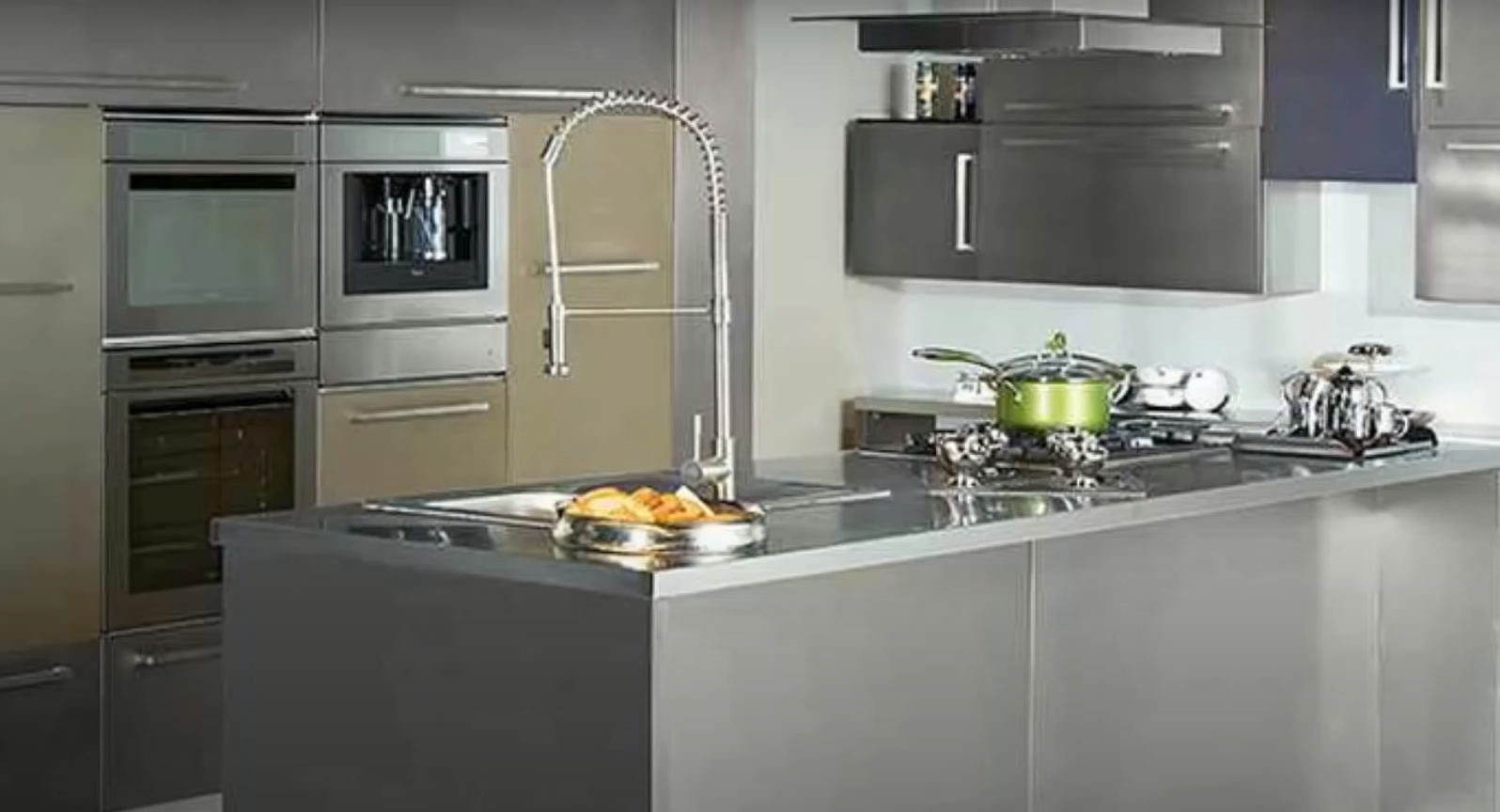
Since aluminum is lightweight, it can be easily cut and shaped into just about any design you’d like. Plus, the smooth surface makes for easy cleaning!
Plywood kitchen cabinets are the most common type—and for good reason. They’re easy to find, affordable, and available in just about any style you could imagine.
Plywood is essentially layers of wood that have been glued together into one thick sheet, which means these cupboards can be made much thinner than traditional cabinetry without sacrificing strength or durability (a huge plus if your kitchen lacks storage space). But since plywood is a natural material it’s more prone to damage from moisture exposure so hand-sanded finishes tend to look better over time than machine-sanded ones do.
On top of all this, there’s also particleboard! As its name suggests, this type of cabinet uses tiny particles of compressed wood instead of full-sized planks, making it the most cost-effective—and flimsy of all cabinet material options.
Plastic kitchen cabinets are one of the newest types on the market and although they’re not exactly known for their durability (they tend to get scratched up easily), they certainly offer a unique look! Made from durable PVC plastic, these cabinetry units come in just about any color you could imagine and can even be customized with raised designs that mimic other popular materials like marble or granite.
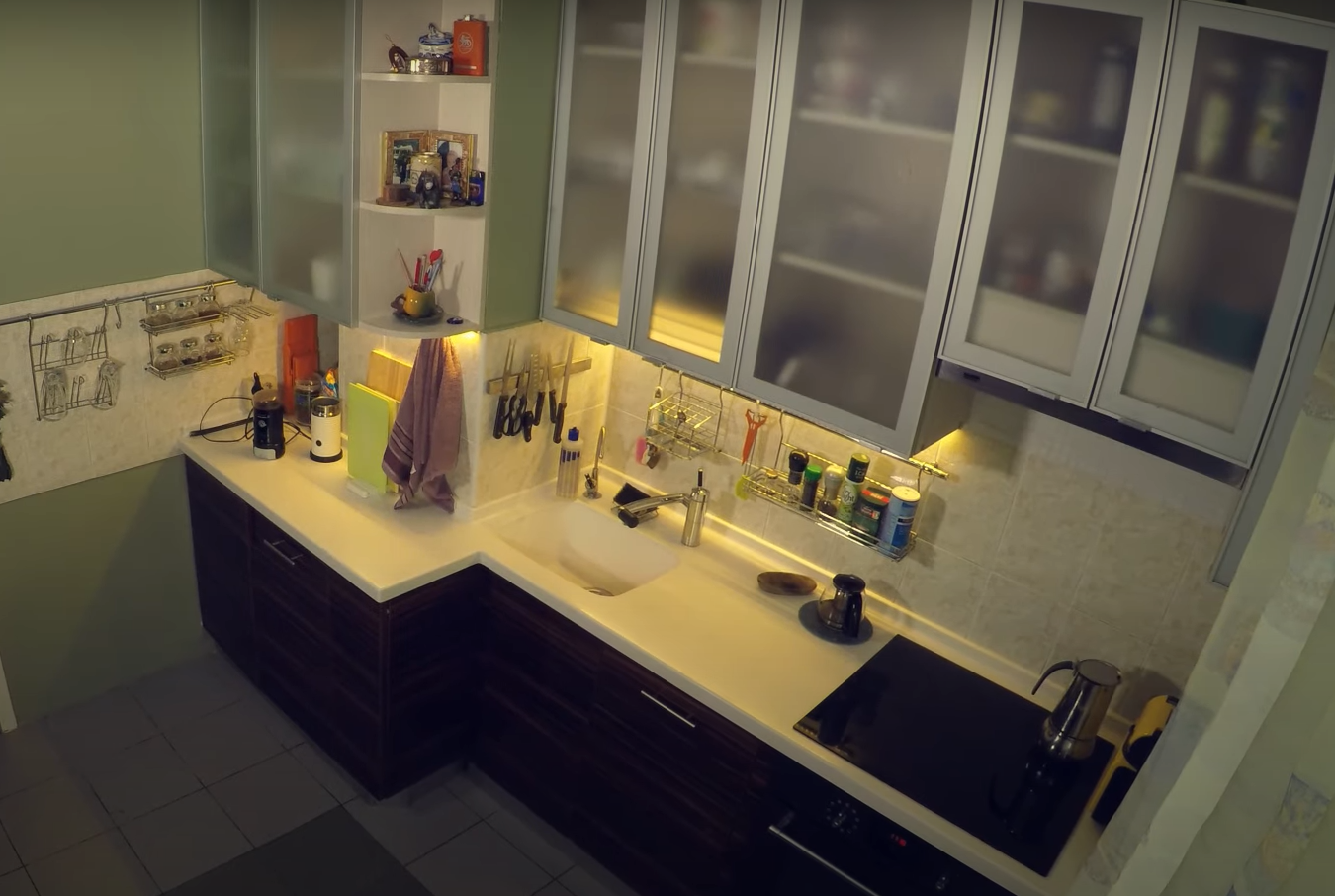
Since this type is often molded into interesting shapes, it’s also easy to find matching countertops and backsplashes made from plastic as well. Whether you’re looking for an ultra-modern design or simply want something fun and eye-catching to brighten up your room, plastic kitchen cabinets are a great choice!
And let’s not forget custom options—most companies allow for full customization when it comes to their cabinets’ construction materials. The sky’s the limit and there’s really no wrong way to go here – just be sure you’re working with a company that can meet all of your needs before making any decisions.
Kitchen Cabinet Screw Strength
One more point that is important to consider when purchasing new kitchen cabinets or refinishing old ones, is the strength of the screws. If you are installing your own cabinets instead of hiring a professional, be sure to use appropriate hardware for both support and safety purposes.
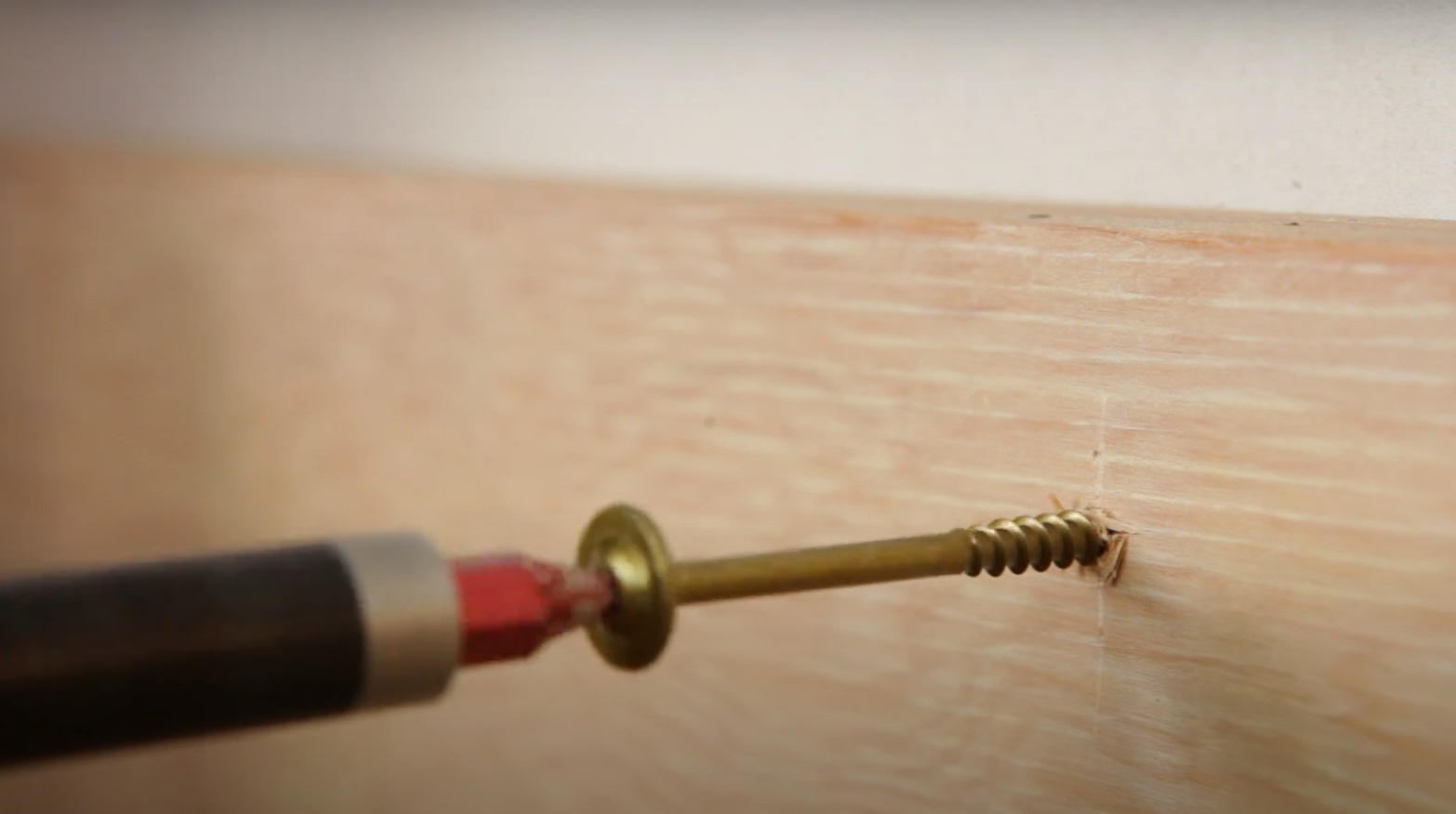
The last thing you want is for them to fall down on top of someone! You can find what weight they hold by checking out their load capacity which should be available either in product descriptions or over the phone with customer service.
The most common type of screw used in cabinets is the drywall screw. These screws are easily found at hardware stores and come in a variety of sizes, but they should not be considered for heavy-duty cabinet projects; these screws should only hold up to 100 pounds per square inch (PSI).
Another type of screw that is commonly used is the self-drilling type. Although these screws will hold a bit more weight, they can still only support up to 200 PSI.
Can I Safely Check How Much Weight a Cheap Kitchen Cabinet Can Hold?
There are many websites that offer calculators for determining the weight capacity of your kitchen cabinets, but are they accurate? The answer is no. There are too many variables to consider when testing how much a cabinet can hold before it breaks or fails–such as what type of wood you use and where you place them in your home.
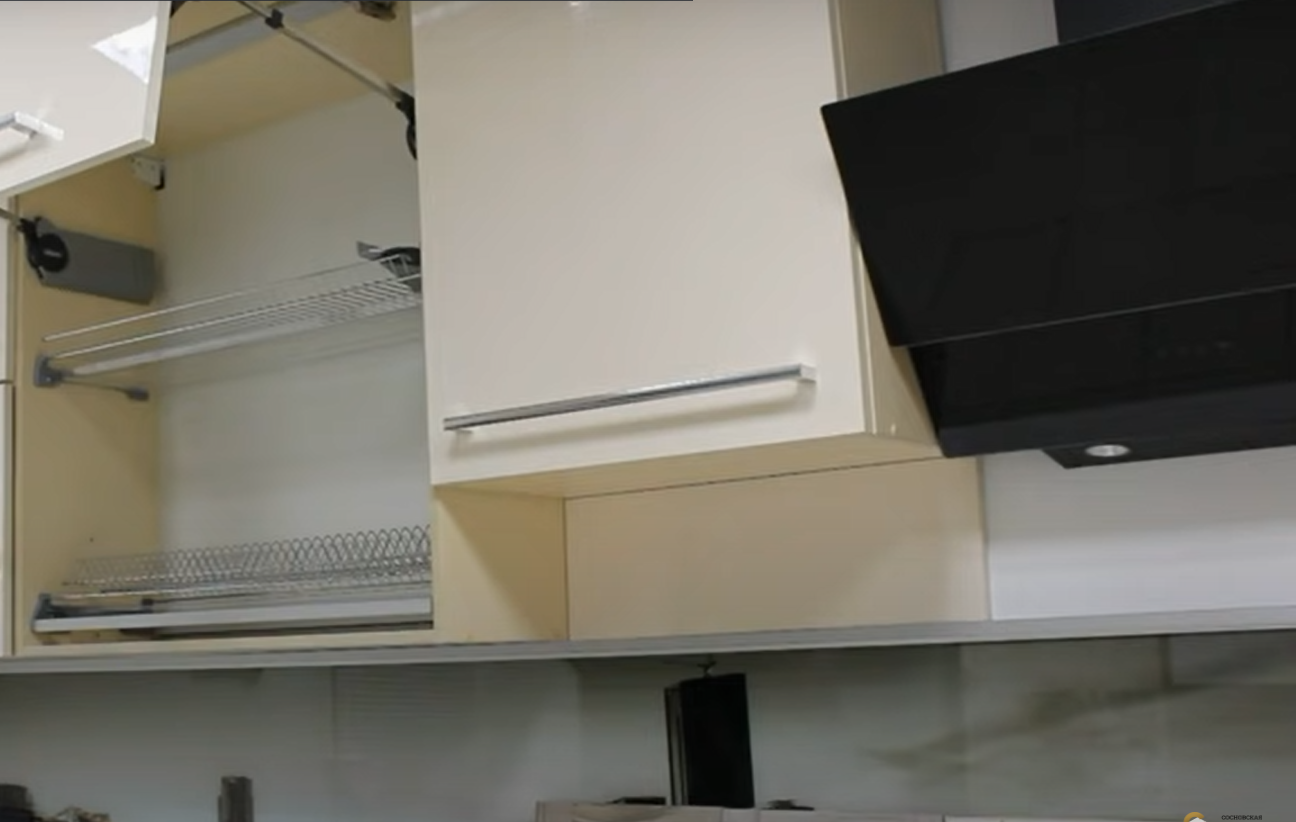
A better approach would be to contact an expert at a store like Home Depot or Lowe’s who will come out to measure each cabinet leg separately, giving you their exact measurements. This way, not only do you know exactly how much weight all of your cabinets combined can support without breaking down, but also the amount each individual piece can handle on its own!
You should also keep some things in mind regarding installation locations. If you’re placing your cabinets along an outside wall, the weight capacity is going to be lower than if you’re installing them in a corner of the room. This is because the weight will be distributed along two cabinet legs instead of just one.
It’s also important to consider that if you’re placing cabinets on top of carpet, this adds an additional load onto your cabinets and could cause them to break or damage more easily than when they are placed over a solid surface like tile or hardwood.

One more way to figure out how much weight a cabinet can hold is to simply add up the total weight of all your kitchen appliances, then divide that number by 30. This will give you an estimate on how much each cabinet leg should be able to support safely!
How much space should be between upper and lower cabinets?
The last thing you want is your kitchen cabinets to be too close together. If they are, it will make the space look smaller than it really is. That means that if you have a small room and don’t want to appear even smaller, then take care in measuring for just the right amount of spacing between upper and lower units.
Make sure there’s enough space between them so things like pot lids won’t get lost back there or worse yet fall behind the cabinet when doors open! You might think this sounds pretty obvious but believe me, I’ve known more than one person who has actually had this happen to them! It’s not fun having dinner guests standing around laughing at you because an errant lid fell through the cracks of your home’s kitchen cabinets.
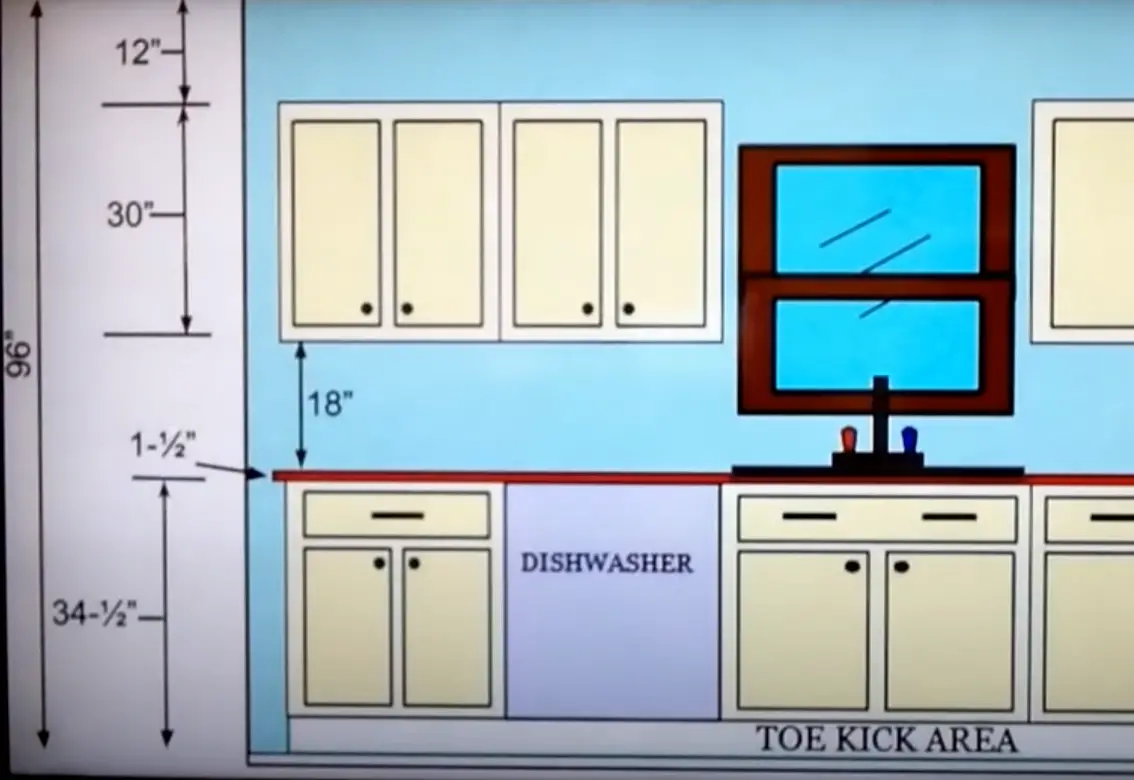
The distance between two openings should never be less than 12 inches or more than 18 inches depending on what works best with your individual project requirements. This measurement can also vary by manufacturer so pay attention to product specifications when making this final decision about how much space should exist between each cabinet opening within an entire unit.
Weight Capacity of Kitchen Cabinets
This table provides a detailed comparison of weight capacities for various types of kitchen cabinets. Knowing the weight limits of kitchen cabinets is crucial for proper organization and storage planning. The data presented below is in the imperial system, specifically in pounds (lbs).
| Cabinet Type | Weight Capacity (lbs) | Material | Construction |
|---|---|---|---|
| Wall-Mounted Cabinets | Up to 150 | Particleboard, Plywood, or MDF | Sturdy metal brackets or wall studs |
| Base Cabinets | Up to 400 | Particleboard, Plywood, or MDF | Wooden or metal frame with supporting legs |
| Pantry Cabinets | Up to 600 | Particleboard, Plywood, or MDF | Reinforced shelves and sturdy construction |
| Drawer Cabinets | Up to 100 | Particleboard, Plywood, or MDF | Durable drawer slides and reinforced sides |
| Corner Cabinets | Up to 250 | Particleboard, Plywood, or MDF | Reinforced frame with corner brackets |
It’s important to note that these weight capacities are approximate values and can vary based on the specific design, materials, and construction techniques used by different manufacturers. Always refer to the manufacturer’s guidelines and consider the weight distribution within the cabinets to ensure safe usage and prevent any potential damage.
FAQ
Can kitchen cabinets fall?
Yes, if they are not installed properly. If your cabinets are top-heavy due to the sink or stove being on them, then you should brace them yourself to make sure that they can support their own weight and any items that you put in them.
How do you reinforce kitchen cabinets?
There are a few ways that you can reinforce your kitchen cabinets. One way is to use plywood on the bottom of each cabinet and secure it with wood screws. Another option would be to install metal braces under the cabinets; this method is ideal for medium-heavy items like dishes or appliances (think refrigerator). The last way would be to glue and brad nails; this method works well for lightweight items.
Do I need to reinforce my cabinets for concrete countertops?
Yes, you do. If your countertops are poured concrete and they weigh more than 100 pounds per square foot (150 psi), then it is a good idea to reinforce the cabinets under them in order to make sure that they can support their weight.
Why are my cabinets separating from the wall?
If your cabinets are separating from the wall, they might not be installed correctly or securely. You can try to put a wedge between the cabinet and the wall in order to hold it up until you fix this issue properly.
What is the weight capacity of standard kitchen cabinets?
The weight capacity of standard kitchen cabinets can vary depending on factors such as the type of construction, materials used, and installation method. On average, well-constructed and properly installed kitchen cabinets can typically support a weight load of 50 to 100 pounds per linear foot. However, it’s important to consult the manufacturer’s specifications or consult with a professional installer for accurate weight capacity information specific to your cabinets.
How can I determine the weight capacity of my kitchen cabinets?
To determine the weight capacity of your kitchen cabinets, you should consider the following factors:
- Materials: Cabinets made from solid wood or plywood tend to have higher weight capacities compared to cabinets made from particleboard or MDF.
- Construction: Well-constructed cabinets with sturdy joints and reinforcements can typically support heavier loads.
- Mounting: The method of installation, such as wall studs, brackets, or cleats, can affect the weight capacity.
- Supporting hardware: The type and quality of hinges, drawer slides, and other hardware can also impact the weight capacity of the cabinets.
If you’re uncertain about the weight capacity, it’s advisable to consult the manufacturer or a professional installer for accurate information specific to your cabinets.
What can affect the weight capacity of kitchen cabinets?
The weight capacity of kitchen cabinets can be influenced by several factors, including:
- Materials: Cabinets made from solid wood or plywood tend to have higher weight capacities compared to cabinets made from particleboard or MDF.
- Construction: The quality of construction, such as sturdy joints, reinforcements, and bracing, can impact the weight capacity.
- Mounting: The method of installation, including the type of wall studs, brackets, or cleats used, can affect the weight capacity.
- Hardware: The type and quality of hinges, drawer slides, and other hardware can contribute to the overall weight capacity.
- Installation: Proper installation techniques, such as securely attaching the cabinets to the wall and ensuring level installation, are crucial for maintaining the weight capacity.
It’s important to consider these factors to ensure that your cabinets can safely support the intended weight without risk of damage or failure.
Can kitchen cabinets support the weight of a countertop?
Yes, kitchen cabinets are designed to support the weight of countertops. However, the weight capacity can vary depending on the factors mentioned earlier, such as materials, construction, and installation method. It’s essential to ensure that your cabinets are properly installed and have the necessary structural support to handle the weight of the countertop. If you’re planning to install a particularly heavy countertop material, such as granite or concrete, it’s advisable to consult with a professional installer or engineer to ensure that the cabinets are reinforced adequately.
What should I do if I need to increase the weight capacity of my kitchen cabinets?
If you find that your kitchen cabinets need to support more weight than their current capacity allows, there are a few options to consider:
- Reinforce the cabinets: Adding additional reinforcements, such as braces, corner brackets, or plywood panels, can help increase the weight capacity of the cabinets. Consult with a professional installer or carpenter to ensure proper reinforcement techniques.
- Upgrade the hardware: Upgrading to heavy-duty hinges, drawer slides, and other hardware designed to handle heavier loads can improve the weight capacity of the cabinets.
- Redistribute the weight: If possible, rearrange items within the cabinets to distribute the weight more evenly, reducing the strain on specific areas.
- Consider professional advice: If you’re unsure about the best course of action, it’s recommended to consult with a professional installer or engineer who can assess your cabinets and provide guidance on increasing their weight capacity.
Keep in mind that modifying or reinforcing cabinets may require professional expertise to ensure structural integrity and safety.
Useful Video: How Much Weight Can Kitchen Cabinets Hold?
Final Thoughts
Kitchen cabinets are a great way to add storage space and style to your home. But, you want to make sure it can hold the weight of all the items you will be stored in before purchasing new ones.
So how much can kitchen cabinets hold? The correct answer would be: it all depends!
We hope that our guide has helped you better understand how much weight each type of standard kitchen cabinetry can hold so that if you’re trying to figure out what kind of items they’ll be able to support before purchasing new ones & hanging them in place on your own, this gives you some basic guidelines regarding size and construction too!
Do you have any tips or questions you’d like to add? Let us know about them in the comments section!



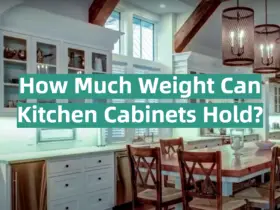

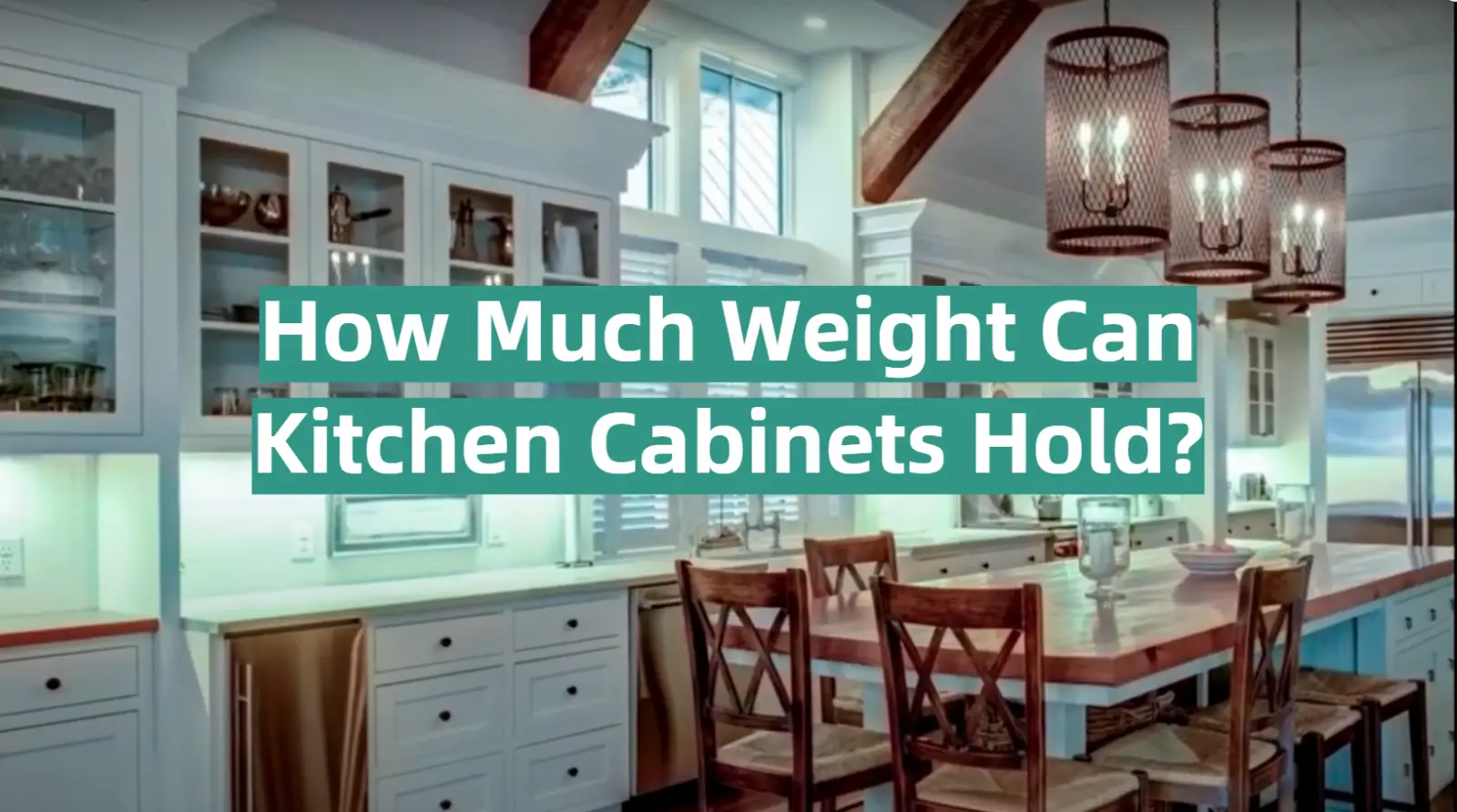








As someone who just remodeled their kitchen, I was surprised to learn that standard kitchen cabinets can hold up to 50 pounds per square foot. I had a cabinet installer tell me this when I asked how much weight I could store on my new shelves and in my base cabinets. It seems like a lot but makes sense for holding dishes, pots and pans. I feel better knowing my cabinets are built sturdy enough for typical kitchen items.
When researching kitchen cabinets, I read that the weight limit really depends on the quality and type of cabinet. Basic cabinets with lighter materials may only hold 30 pounds per square foot. Sturdier wood or metal cabinets with reinforced shelves can handle 50-75 pounds per square foot. So I invested more in solid oak cabinets because I have some heavy cast iron cookware I wanted to store.
I’ve found through loading up my kitchen cabinets that the weight capacity per shelf can vary. Lower shelves seem to hold more since they have the cabinet sides and bottom reinforcing them. The upper shelves bow a bit with heavier stacks of plates. So I try not to overload the upper shelves as much as the lower. The cabinet frames definitely support a lot of weight though.
Having seen my old cabinets gradually warp and pull away from the wall with years of heavy cooking gear stored in them, I asked my cabinet builder about weight limits. He said metal brackets, hinges and rails on modern kitchen cabinets allow them to safely hold around 50 pounds per square foot. Just avoid excessive weight on upper shelves or far corners. Solid cabinets and installation are key.
Through my experience with DIY and custom cabinetry, there are a few tips I’ve learned regarding weight capacity. First, wall cabinets with added structural bracing on the back panel can hold more weight than regular mount cabinets. Second, wood species makes a difference – oak, maple and hickory are stronger than particleboard. And third, reinforced metal shelf standards offer more support than basic clips or pegs. Consider these factors before loading up cabinets!
When I was designing my kitchen, I had concerns about the weight of my large cookbook collection and heavy cast iron skillet collection. My cabinet maker advised me that standard modern cabinets can hold 50-60 lbs per sq ft as long as the shelves were properly installed. I took his advice and have had no issues with sagging or stress even with my robust cookware collection!
Recently, I went to grab my stand mixer from a base cabinet and the shelf actually collapsed! After the initial shock, it got me wondering – how much weight can these cabinet shelves really hold? I checked online and was surprised most kitchen cabinets can handle around 50 pounds per square foot. Time to reinforce those shelves before putting everything back.
I used to have no clue how much weight kitchen cabinets could support. I’d just load them up with dishes, pots and pans with no regard. But after a few sagging shelves over the years, I asked my carpenter father-in-law. He said standard cabinets can hold 30-50 pounds per square foot, with variables like material and shelf type. I did some reorganizing to avoid overloading shelves, especially up high, to prevent future issues.
In setting up my new kitchen, I wanted to organize my stuff efficiently while also not exceeding weight limits. Based on the information from my cabinet manufacturer, it seems the rule of thumb is 30-50 lbs per square foot for typical cabinets. But variables like shelf thickness, bracket type and wood species impact the actual capacity. I’ll try to distribute weight evenly and avoid loading shelves to the extreme.
When loading up my new pantry cabinets with cans, jars and baking supplies, I became curious just how much weight kitchen cabinets are built to handle. I checked the specifications from the manufacturer, and was impressed that the plywood construction and metal shelf brackets were rated for 50 lbs per square foot. That’s more than enough for my needs, but good to know the limits.
After having a shelf collapse on me when grabbing a heavy Dutch oven, I looked into how much weight kitchen cabinet shelves can realistically hold. General wisdom seems to be around 50 pounds per square foot for medium-duty cabinets, but less for basic or upper cabinets. Now I try to store my heavier cast iron on lower shelves and distribute weight more evenly to avoid issues.
In outfitting my cabinets with shelves and drawers for all my cooking gadgets, I knew at some point I’d overload something. Sure enough, a lower shelf started sagging in the middle. After talking with a contractor friend, I learned typical cabinets can hold 30-50 pounds per square foot depending on materials. Time to reorganize and remove some excess weight! Lesson learned.